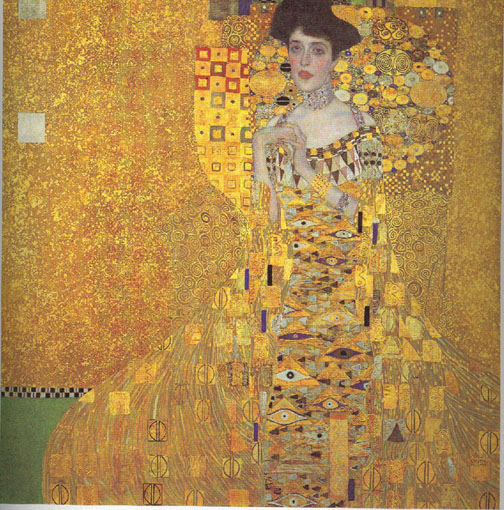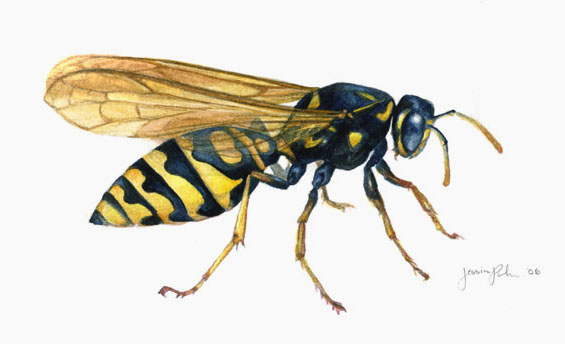Life of Pi (Amazon)
I know it’s been a few years since this book was published (2001), and I have no excuse for not reading it sooner. But damn, it’s well-written. Like The Little Prince, it’s painful but beautiful to read.
Life of Pi (Amazon)
I know it’s been a few years since this book was published (2001), and I have no excuse for not reading it sooner. But damn, it’s well-written. Like The Little Prince, it’s painful but beautiful to read.

“Adele Bloch-Bauer I,” by Gustav Klimt, 1907.
Today I visited the Neue Galerie in New York to view the stunning painting “Adele Bloch-Bauer I,” by Gustav Klimt (1907). Klimt is most familiar as the artist behind “The Kiss” (a seemingly ubiquitous college dorm-room poster; also painted in 1907). I never loved “The Kiss” (the woman’s head is in a most uncomfortable position!) but “Adele Bloch-Bauer I” is among the few paintings I would pay $15 simply to stand and stare at. It’s worth it, not only because of the impressive size of the piece (55.5 inches square) but also because Klimt used metallic gold and silver, raised texture, and embossed symbols which can only be appreciated on the original painting. I have never seen a reproduction of this painting that did it justice.

A yellowjacket wasp. I believe this is Dolichovespula arenaria, the common aerial yellowjacket, which is found throughout the US, particularly on the coasts. This specimen very thoughtfully died on my front steps a few weeks ago, when it started getting cold at night.
Rendered in transparent watercolor on Aquarius II paper.
Artists are opinionated. I know a very good artist who can’t stand Van Gogh, and I almost got smacked last weekend for admitting I prefer Dali to Matisse. (I prefer almost anyone to Matisse, except Thomas Kinkade). Anyway, we have all encountered artworks that we don’t really get. That’s why this description by Peter Schjeldahl, writing in the New Yorker, struck a chord:
Art itself–its structures and its uses–could seem a sufficient field of meaning, back when people still liked to believe that art’s development expressed an intrinsic, progressive logic. That was called modernism, and it is enshrined in the catechismal hanging of MOMA’s permanent collection, from Cezanne to Pollock. (The style parade obscures the fact that Cezanne and Pollock had real subjects, replete with philosophy and feeling, that emerged through and go beyond art). As a lingering habit of the curatorial mind, modernist presumption shores up some otherwise defenseless work in “Out of Time.” . . . All of them amount to aesthetic demonstration projects that have no conceivable significance outside a gallery or museum–a dedicated art space–which they inhabit with the tender dependency of creatures in a petting zoo.
Schjeldahl is describing some installations in a current MOMA exhibit, but this description could equally apply to many art installations I have encountered.
Animal welfare: See things from their perspective – 23 September 2006 – New Scientist
This New Scientist article suggests that a tendency to anthropomorphize animals’ emotions sometimes prevents us from making the best decisions about their care. Specifically, cats’ stoicism (to use an anthropomorphic term!) may prompt vets to provide them with less analgesia during or after surgery.
Jennifer Howard: The Uses of Fantasy
I’ve been seeing the paperback version of Susannah Clarke’s very long, very hefty Jonathan Strange and Mr. Norrell everywhere. It shares the unwieldy girth of all very long novels in small paperback incarnations: almost half as thick as it is wide, it can’t possibly lie flat or read easily once you get to the middle chapters. But as shameless escapism, the more of it the better (Cryptonomicon is another example).
Last year, when I read JS&MN, I was both amused and annoyed by it. It’s a pastiche of literary styles and mannered comedy that should be instantly recognizeable to a reader of Dickens and Austen. It’s clever. It’s well written. But as a “fantasy novel,” it didn’t quite feel right: not grand enough. Not serious enough.
What Muppet are you?
You Are Miss Piggy |
 A total princess and diva, you’re totally in charge – even if people don’t know it.You want to be loved, adored, and worshiped. And you won’t settle for anything less.You’re going to be a total star, and you won’t let any of the “little people” get in your way. Just remember, piggy, never eat more than you can lift! |
This past weekend I entered many of my books into a delightful website, LibraryThing. It’s the internet incarnation of those wonderful old wood card catalogs with the tiny brass-labeled drawers, only much simpler to use. (Does anyone actually remember how to use a card catalog anymore?)
It is a truth universally acknowledged that a brand-new blog is in desperate need of a topic. (And readers, of course – but you’ve found your way here somehow.) Bioephemera is about the intersection of science – mainly biology – and the arts. I am a biologist and an artist, but I’ve always felt awkward identifying myself as both. This strange combination seems to beg an explanation. But why?